Welcome to the 759 newly Not Boring people who have joined us since the last email! If you’re reading this but haven’t subscribed, join 21,976 smart, curious folks by subscribing here:
This Week’s Not Boring is brought to you by… MarketerHire.
Hiring a full-time marketer can take months of legwork with no guarantee of success. That’s why MarketerHire built a network of expert marketing professionals, pre-vetted by top marketers from brands like Glossier, Allbirds, Headspace and more. In as little as 48 hours, MarketerHire's team matches you with a hand-picked expert marketer who is aligned to your business goals and can drive real results. Their network is filled with marketers who have deep expertise in email marketing, social media ads, growth marketing, SEO and more — and they're available on-demand in hourly, part-time and full-time engagements. No retainers. No long-term contracts.
A couple of months ago, I was talking to my friend FJ about his eCommerce business, and he told me that he’d brought on a part-time marketer who was doing an amazing job. I asked if he used MarketerHire. He laughed, confused, and said yes. No joke, that’s a real story.
The best part? There’s no risk. You don’t sign or pay anything unless you choose to work with someone. Plus, MarketerHire is offering a $500 credit for any Not Boring reader who signs a contract before 12/15/20. If you’re looking for marketing talent you can trust to deliver, click the link below to get started.
Hi friends 👋 ,
Happy Monday!
On Mondays, I typically write deep dives on some of the most fascinating companies in the world. About once a month, though, I like to get a little wild, pick a trend, and work through its implications.
Last month, I wrote that Software is Eating the Markets. Today, I’m exploring Remote Work, about which two things are true:
We talk about it a lot already.
Its potential impact is deeply underappreciated.
Remote Work will change everything.
Now let’s get to it.
We’re Never Going Back
Admit it. When you first heard the news about the 90-95% effective vaccines, out loud you said:
“Oh that’s wonderful! Think of all the lives saved!”
While inside you were like:
“Ah fuck.”
That doesn’t make you a bad person. The selfish part of your brain has a faster reaction time than the good person part. And selfishly, for those lucky or privileged enough to have avoided losing loved ones to COVID and to be able to work from home, COVID has had some positives.
The vaccine, for all its benefits, also means a few things you’re not going to be happy about if you’ve gotten used to the “new normal.” Bye bye ready-made excuse for any social event you didn’t really want to go to. Sweatpants are out, slacks are in. Hope you enjoyed spending time with your family, that’s done. Gas up the car for your morning commute! It’s time to go back to the office.
Or is it? In month one, two, three, or even maybe four of the pandemic, it was a foregone conclusion that once this whole thing was over, we would go right back to the office. Then, after people moved around, spent more time with family, set up their home offices, became adept at matching sweatpants with a presentable top, and got used to their 15-second commutes, that conclusion seems less foregone. And as people learned new routines, companies adopted new ways of working together. It’s not perfect, but nothing ever is eight months in.
Now, a debate rages among three camps:
Return. In this camp are the old school businesses and new school businesses led by more conservative leaders who want their teams to get back to the office so they can get back to real work.
Remote. The organizationally bleeding-edge companies were remote-first or remote-friendly even before COVID, and many tech companies have announced that they plan to let their employees work from anywhere even after a vaccine.
Hybrid. This camp agrees that things won’t be exactly the same, and their solutions range from “Maybe we’ll let people work from home on Fridays!” to much more creative combinations. “Hybrid” gets a bad rap because to date, it’s meant “most of us are in the office but some of you can be remote and Zoom in for meetings,” but I’ll be referring to a more intentional type of Hybrid that treats everyone as a combination of Remote and in-person.
Missing from the debate is the fact that it’s not really up to the companies to choose. Employees will ultimately make the decision. The best employees have more options now than ever before, and they’re not going to work for companies that make them shave, get dressed, hop into a car or a crowded subway, and sit at a desk in an office five days a week with their headphones on trying to avoid distractions and get work done.
Choosing to Return to the way things were is like choosing not to adopt software a decade or two ago. It’s an option, but one that will doom a company to mediocrity.
The idea that Remote is coming and the role of the office is changing is not novel. Much ink has been spilled on the subject, both before and after the start of COVID (no one, I think, has written better on the topic than my friend Dror Poleg). Even Bill Gates recently predicted that “30% of the days in the office will go away.”
Generally, though, people are both overestimating the likelihood that companies will successfully Return to the office full-time and dramatically underestimating the first-, second-, and third-order impacts of Remote or Hybrid work.
To help put that into context, we’ll explore:
The Remote Hype Cycle. We all went Remote way too quickly. It’ll get better.
The Risk of Return. The decision isn’t up to employers, it’s up to employees. Companies that try to force a Return will lose the talent war.
New Physical and Digital Solutions. Remote won’t always mean Zoom, and the Office won’t always mean sitting at a desk five days a week.
Implications of Remote and Hybrid Work. The shift to Remote and Hybrid is going to change everything from work itself to housing, gaming, fitness, and so much more.
We’re never going back to the way things were. Like any major dislocation, that presents massive opportunities for those who are prepared and is going to completely run over those who aren’t. This essay doesn’t have all of the answers. Instead, it’s an exploration of the trend, new options, and some implications, and a wakeup call to get ahead of this and win the gold rush.
The Remote Hype Cycle
It always feels safer to bet on the status quo. We’ve worked in offices for more than a century, and we’ll work in offices again.
Partially, that’s because the burden of proof is always on the new thing; fads come and go, but at any moment, the way things are is the likeliest suspect for the way things are going to be. Partially, it’s because the new thing is clunky; of course it is, it’s new. And partially, it’s because all of the other things that will spring up around the new thing haven’t sprung up yet.
Take the laptop. In a 1985 New York Times piece titled “The Executive Computer,” Erik Sandberg-Diment concludes a skeptical journey through various viewpoints on the laptop’s potential by writing:
As the software that is capable of turning them into true satellite offices becomes refined, they will probably even be used - in fact, profitably so. But the real future of the laptop computer will remain in the specialized niche markets. Because no matter how inexpensive the machines become, and no matter how sophisticated their software, I still can't imagine the average user taking one along when going fishing.
It’s hard to blame him. Desktop computers and floppy disks were the norm. Laptops were clunky. And the whole ecosystem of wifi, lithium-ion batteries, coffee shops, cloud-based software, and the millions of other things that combine to make laptops useful wasn’t yet in place. A laptop was a poor substitute for the real thing.
Those in the Return camp think that, like the laptop, remote work will be for specialized niche companies, not the average one. They’re wrong, but it’s hard to blame them. Remote work today isn’t very good.
Remote is new. Before the pandemic, only GitLab really did it at any meaningful scale.
Remote is clunky. Sitting at your kitchen table all day with kids screaming in your ear while you hop on the 7th Zoom call of the day, which is, by the way, a depressing Zoom Happy Hour, is a terrible experience.
Remote’s ecosystem is underdeveloped. We’ve had to shoehorn pre-Remote solutions to fit a new paradigm, and the impending wave of new tools hasn’t yet arrived.
Because of the biggest exogenous shock to the system in decades, remote work, which can be viewed comprehensively as a technology, hasn’t gotten the chance to methodically work its way through the Adoption S-Curve. Instead, like Snapchat, Laptops, and Bitcoin, it’s going through one of my favorite frameworks: the Gartner Hype Cycle.
COVID triggered a rush to remote work, and proponents quickly prophesied a remote-only future in which everyone lives and works from anywhere -- the Peak of Inflated Expectations. As the reality set in -- Zoom fatigue, kids at home, loss of social connection with co-workers -- remote fell into the Trough of Disillusionment. Remote and Hybrid skeptics point at the shortcomings and say, “See, it might work for some companies, but not every company, not serious ones like ours.”
Now, with a post-COVID world in view thanks to the vaccine, and faced with the possibility of having to put real pants back on, we’re hitting the Slope of Enlightenment, which is defined as 1) the point at which the benefits begin to crystallize, 2) second and third generation products emerge, and 3) some enterprises pilot solutions while the most conservative remain skeptical. Check, check, check.
The manifold benefits of Remote or Hybrid are beginning to crystallize, a few of which are:
No Commute. People spend nearly one stressful hour commuting every day. That’s time they could be sleeping, working out, hanging with their kids, or even doing more work. Now that we’ve lived without commutes, it’s hard to imagine going back.
Live Anywhere. Not going to the office every day expands the choices for where to live. In Hybrid companies, employees might be able to live in the country two hours outside of the city and go in once or twice a week. Remote employees can live anywhere they desire, with anyone. Location will no longer be tied to employment.
Increase Opportunity and Access. Only .01% of the people in the world live in San Francisco, but a disproportionate amount of great jobs were based there. Now, the best people anywhere in the world can find their dream job without leaving their friends and families.
Find Better Talent. The flip side of the above is that companies who look globally can access the best talent in the world, regardless of where they happened to be born.
More Time With Family and Friends. Out of necessity and that magic that binds people going through a challenge together, people accepted that their co-workers were also going to be the people they spent the most time with: eight-plus hours in the office together, five days per week, plus happy hours. Remote will unbundle work and social.
Importantly, all but the most conservative companies understand that they will at least need to be Hybrid, if not fully Remote, not because they want to, but because the best people want to.
The Risk of Return
Typically, it’s safe for companies or people to wait until a technology gets a little bit further up the Slope of Enlightenment before deciding whether or not to adopt it. Competitors might move a little faster in the short term, but they could always adopt the new thing next year and be OK.
Companies don’t have that luxury with remote work. Those who force their teams back into the office risk losing their most valuable resource: their most highly-sought-after employees.
In a May interview with The Verge, Slack CEO and Not Boring hero, Stewart Butterfield, responded to a question about how he’s planning to organize the company geographically:
In other words, the decision isn’t up to the traditional decision-makers. The possibility of Remote work will create a liquid global talent marketplace, unshackling employment and geography and giving the best employees more optionality than they’ve ever had. Forward-thinking companies, too, will have more qualified candidates to choose from than ever before.
If you believe that a company’s most valuable asset is its employees, then the decisions that companies make around Remote work in the coming months will be the most important they’ve ever made. There will be a massive first-mover advantage available to the companies who move quickly and intelligently. The shakeout will lead to a gaping bifurcation in talent quality.
(I bought an iPad so I could make beautiful drawings like this)
Remote Co can attract A players from anywhere in the world, including Local Co’s hometown. Local Co is left with the B and C players in its hometown.
Last year, Stripe made Remote its fifth engineering hub, in addition to San Francisco, Seattle, Dublin, and Singapore. This September, it offered employees $20,000 upfront (with a potential cost of living pay reduction) to move out of the Bay Area, New York, or Seattle. Already a desirable place to work, Stripe can attract the best talent from anywhere in the world with the promise that they will be equally important to the employees in the four physical hub cities.
On the other end of the spectrum, imagine a company that plans to make employees come back to the office five days a week. Assuming that most employees have gotten comfortable working from home and like the flexibility of at least a Hybrid option, and will look for jobs at companies that offer Hybrid or Remote work, this company is left with the people who:
Live in or near the city in which their office is located.
Don’t want to work for a Remote or Hybrid company or couldn’t get a job at the Remote or Hybrid company of their choice.
It’s not just tech employees, either. I have one lawyer friend who just chose one offer over another because its location was going to be more flexible, and another friend in finance who told me that he’s going to look for a new job as soon as his firm asks him to come back to the office.
If you choose to Return, you’re essentially making a bet that the benefits of all being in the same office every day outweighs the risks of attracting lesser talent and potentially losing your best employees. Mayyyyybe you make that trade if you assume that physical and digital solutions will remain exactly as they are today. But they won’t. They’re already improving.
New Physical and Digital Solutions
One of the features of the Slope of Enlightenment is that new generations of products emerge to make the technology accessible to and comfortable for a wider audience.
COVID-era Remote married technology and circumstances that only an early adopter would typically put up with, with forced mass adoption. A post-vaccine world will combine the best of COVID-era Remote work with the ability to travel, socialize freely, and put the kids back in school, with new physical and digital solutions that bring the experience to mass market quality.
Doing Remote or Hybrid well doesn’t just magically happen. It takes work, buy-in from leaders, and new, better ways of doing things. The companies and leaders who do it well will be in high-demand.
Physical
Before Not Boring, I spent six years at Breather working to make workspaces more flexible. I do not think the office is dead; I firmly believe what I’ve believed since starting at Breather: the office needs to become more flexible, distributed, and convenient, and spaces need to help people and teams do things that they couldn’t do anywhere else. But as Dror, with whom I spent a lot of time planning what Breather should be, wrote in Landlords are Zucked:
The future of work will require space. But a lot of that space will be located, designed, and accessed differently from what we currently call "office space." ... The best companies will need less of the kind of office space that's currently on offer. And they will need it to be packaged and delivered in a way that fits the way their team members work.
Slack’s Butterfield, who manages offices worldwide, agrees that the role of the office needs to change. In the same interview with The Verge, he said:
Offices exist principally to facilitate people sitting at desks using computers. Whereas they could exist principally to allow for more effective collaboration, which means a bigger variety of spaces more dedicated toward meetings, a smaller number of fixed desks, and the expectation that if you already have this giant list of work, and you just have to plow through it, then stay home. And when it’s time to do the roadmapping session to get together with the team and think about what you want to do next, then come to the office.
Slack has since announced that it will allow its employees to work remotely permanently, while maintaining and evolving its physical offices.
Fredrik Carlström, the co-founder of Another Structure and Alma, put it well: “Companies need to let go of the idea that the office is the only way to organize work, and instead think about, ‘What do we want to achieve and how do we organize ourselves in the best way to achieve it?’”
On average, companies in major cities spend $1-2k per month to keep their employees at a desk in an office because that’s just what companies did. Imagine what they could do with $20k per person per year, a blank slate, and a desire to organize themselves around what they want to achieve.
For remote workers:
Give teams budgets to bring people together for a week each quarter to strategize, socialize, and build bonds.
Pay for co-working, Kettlespace, or Breather memberships near where people live.
Encourage employees planning to move to certain regions to choose locations near each other. If a bunch of people want to move to Texas for the sunshine and absence of state taxes, a company could build an outpost in Austin, contract a local realtor, and provide resources on the best schools and activities there (not that people need more motivation to move to Austin).
Provide allowances to join local chapters of work associations and social clubs, or to take classes, in order to build connections and skills beyond the workplace.
Buy Pelotons for every team member to bond over morning rides instead of water cooler gossip.
Travel to see clients more frequently, together, and make an event out of it.
Organize month-long workations, during which employees can move to one city and work together, enabling serendipitous interaction and deep relationship building.
Employees who live near a company hub should be able to participate in many of the same benefits as remote employees. Additionally, instead of mandating a certain number of days in-office, companies should view employees as customers who they need to convince to come in with a great product:
Re-design the office to facilitate things that employees can’t do at home: whiteboard rooms, podcast and video recording studios, screening rooms, maker tools, etc...
Take less space on more flexible terms in order to adapt and evolve as employees’ needs do.
Make the office feel more like a social club, with more focus on spaces for employees to share meals, have spontaneous conversations, and take in work-related programming.
Hire hospitality and flexible operators to help them figure it out. Alma does hybrid work/social well, so Carlström set up Another Structure to bring that expertise to companies that want to build the right spaces for this new world.
Infuse the space with technology to facilitate communication and collaboration with remote employees.
Because physical space takes a lot of time and money to change, much of the future exists today in the words and plans of the people writing about and building in the space; but make no mistake, it’s coming. Each company’s space needs are different and this way of working is new; companies will need to think flexibly, listen to employees, partner with experts, and continue to evolve as they learn more. In addition to changes to the office itself, we’ll also see inventive new real estate tech startups emerge to help companies create better Hybrid solutions.
Digital
I need you to repeat this mantra: “Remote doesn’t just mean more Zooms. Remote doesn’t just mean more Zooms. Remote doesn’t just mean more Zooms.”
Zoom has been synonymous with WFH, and the prospect of sitting on multiple Zooms every day until we die makes some people just want to throw in the towel and go back to the office. Luckily, it makes some other people want to build better solutions. A new generation of software is on the way that will make remote work more social and lifelike, and less transactional.
Branch, Gather, With, Here and Huddle (which is still in stealth) are the emerging leaders in the “Virtual HQ” space. Each takes a slightly different approach to building virtual spaces that feel more like a physical office than Zoom, Slack, or Teams.
It’s clear what they see as Zoom’s biggest shortcoming: serendipity. Both Branch and With use the word “serendipity” in their one-line homepage descriptions, while Huddle opts for “spontaneity” and Gather promises that you’ll “bump into your colleagues.”
Serendipity makes people feel like they’re in an office, an important first step towards building a remote org. GitLab, the largest fully remote company pre-COVID, has spent a lot of time thinking about how to make remote work...work. They identified four phases:
Skeupmorph. Mimic the physical work experience, remotely. Branch and Gather are in this phase, building digital spaces that look like video game-ized offices and recreating physical serendipity.
Functional. Take advantage of remote to function differently. Huddle sits between Skeumorph and Functional, with a light office layout on top of tools that enable fluid communication and collaboration. With and Here sit squarely in this phase, dropping the office layout and organizing around digital tools instead.
Asynchronous. People can work when most convenient, and only meet synchronously for informal communication and bonding.
Intentionality. Rethink how your business works and what’s possible, like measuring employees based on outputs instead of hours and taking advantage of global talent.
As companies gain more experience with Remote, expect startups to build tools for them to move through to the 3rd and 4th phase, as well.
Beyond the software looking to replace the office, new tools built for the new way of working and gathering are thriving. Loom, the asynchronous video startup, raised a Series B in May at a $350 million valuation. The company is less than four years old. Even more whiplash-inducing, virtual events platform Hopin closed a $125 million Series B in early November that valued the company at $2.1 billion. Hopin is 17 months old.
While a $2.1 billion valuation seems outlandish for such a young company, eye-popping numbers like that are like pheromones to other entrepreneurs. We are at the very beginning of a multi-trillion dollar gold rush to build software that makes remote work as enjoyable as the best parts of the real thing.
Remote also presents new challenges and opportunities around which companies can hire which employees from which countries.
Pesto, which I’ve written about previously, trains skilled Indian engineers to work in global companies as part of the team, and works with employers to hire those engineers. Further down the stack, Turing interviews, tests, and vets remote engineers, and lets companies hire the best ones from around the world at half the cost of a similar engineer in Silicon Valley. There are more companies in this space, across a range of functions, and many more will enter -- the global talent arbitrage can be massive and the rewards for the companies who curate that talent will be, too.
Hiring those remote employees is one thing, managing the complexity of employing them is another. That’s where new startups like Deel and Panther come in. Both offer payroll, benefits, and compliance to companies hiring international employees. Deel, founded in March 2019, raised $14 million from a16z in May and another $30 million in a Series B led by Spark Capital in September. Panther closed a $1.7 million pre-seed round (in which I invested a very small amount through a syndicate) from top Silicon Valley angels, despite being based in Tampa, FL. It’s rare for companies from Tampa to raise those types of early stage rounds from SV investors without real numbers behind them, which is an early sign of Remote’s potential to shake things up in itself.
Hiring and payroll software is just one subcategory of Remote startups blossoming during COVID. There are so many that there are early stage funds like remote first capital entirely focused on funding companies with a Remote or Hybrid thesis.
New innovations typically take some time to develop and proliferate. The S-Curve plays out over years. COVID means that large-scale Remote and Hybrid don’t have that luxury, and that the masses were introduced to Remote work at a point in the curve at which only the most fervent early adopters would normally play, where the tools and solutions are still awkward. But that same rush of demand also means that we are going to see a continued explosion of new physical and digital solutions that will quickly make Remote increasingly palatable and pleasurable.
Just as we’re all racing through the adoption curve together like Sonic the Hedgehog and hitting speed bumps at high-speed, the implications of this new technology are going to come fast and furious.
Implications of Remote and Hybrid
My absolute favorite thing that the market does during COVID is that any time any good news about the virus is announced -- the curve flattens, something reopens, vaccines show effectiveness -- “work from home” stocks like Zoom, Peloton, and Slack tank.
The more sophisticated explanation is that good news about the virus means good news about the economy which means maybe interest rates rise earlier than expected and fiscal stimulus is off the table, leading to lower valuations for growth stocks. That might be true in some cases, but doesn’t explain a two-day 25% drop in Zoom’s stock. That drop is explained by the idea that people think that once we all take the vaccine, we’ll be working from home a lot less and companies won’t need Zoom anymore.
Leaving aside whether Zoom is overvalued generally, that precipitous decline shows that the market believes that once we have a vaccine, we’ll largely go back to working the way we were before. Lower Zoom usage would be one of the first-order consequences of going back to work in an office five days a week. I think that’s misguided, and that’s just one of the countless first-order implications, which should be the easiest to understand and price in.
By thinking through the first-, second-, and third-order consequences of continued Remote and Hybrid work, you can find opportunities where others don’t. It’s a version of narrative-based investing, when you believe that the story the market is telling itself is wrong and think through what will happen once the narrative begins to change. I don’t have all the answers -- I could be totally wrong and all of you might be back in an office every day in six months -- but I’ll give a few examples of what I think a Remote and Hybrid future could mean. You should think through your own ideas here, too.
First-Order Consequences
If Remote and Hybrid win out, a few things seem likely to happen as a direct result:
Urban Office Prices Will Fall. Office prices in cities like San Francisco and New York will continue to fall in the short-term while companies figure out how to build spaces that attract employees. Flexible operators and spaces, like Convene, Industrious, Breather, Flex by Squarefoot, Switchyards and Kettlespace will have the opportunity to position themselves as experts in building spaces that attract employees, on flexible terms.
Remote and Hybrid Companies Will Attract Talent. Employees will flock to companies with both flexible Remote and Hybrid options, and increasingly, demonstrated skill at managing remote and in-person teams. Remote Work experts will become a part of many companies’ People teams.
Remote and International Hiring Will Explode. Companies will take remote and international hiring seriously, and will need to wrestle with how to compensate people who do the same job from different parts of the world. Over time, companies will learn how to work better remotely and push through cost of living adjustments, saving money on salary in addition to rent.
Spend Shifts to Perks and Software. Companies will reallocate the money that they would have spent on higher salaries, a desk for every employee, and office perks to better at-home setups, fitness, food, and travel allowances, and more software.
Work From Home Trade is On. The WFH software companies will continue to thrive until and unless new, better, remote-first products begin to steal market share. Cloud’s dominance will accelerate as companies realize the shift is permanent. Zoom will be at-risk over the medium-term, but numbers will continue to surprise to the upside for a while as people take time to digest the idea that a vaccine doesn’t mean the end of Remote.
Short Return Companies. Companies that try to force a Return on their employees will lose their best employees, and by optimizing for “willingness to come to the office every day,” will hire B and C players. Their decision will also expose a short-sightedness akin to not wanting to leverage software a decade or so ago. “Return” will be a leading indicator of underperformance. Obviously, some companies -- medical, manufacturing, hospitality, and the like -- should Return, but you should short companies that have another option and don’t take it.
Second-Order Consequences
Digging a level deeper, things start to get a little less obvious and a little more interesting.
More Consumer Travel, Less Business Travel. If more employees can work from anywhere and save money by not commuting and eating at home every day, they’ll be able to travel more frequently. A higher proportion of travel will be for pleasure instead of business, meaning that consumer-focused companies like Airbnb look more attractive than hotels, which generate a lot of revenue from business travel and corporate events.
People Will Move More Often. They’ll experiment with new cities. That could be another win for Airbnb, whose long-term stays let people live in a new place for weeks or months at a time. It’s also part of Chamath’s thesis for acquiring Opendoor. As more people move more often, iBuyers that make the process of buying and selling a home easier will gain more market share in a growing market.
Social Will Go Local. As people look for new ways to meet, either because they’re living in a new place, or because they don’t rely on work for friendships in the same way, social will go local again. Gyms and group fitness classes with post-workout social programming could offer a way to meet new people, like Crossfit already does so well. Speakeasies and other hidden social clubs in empty office space might provide excitement for members and some cashflow for office landlords. The “Soho House for X” trend that was underway pre-COVID will come back with a vengeance as people who have been cooped up for months seek to replace the social role the office used to fill.
The Metaverse. People will turn to other online spaces, too. Gaming will continue its meteoric rise, and the Metaverse will be pulled forward. I would bet on Tencent (Epic, Discord, and dozens of gaming investments), Unity, Snap, and the impending Roblox IPO.
Third-Order Consequences
This is where things start getting really wild. Unshackled by the office’s location, people will move where they want to move, often out of expensive cities and into more affordable towns with better weather. Those are first-and second-order effects. Some third-order effect might be that because they’re saving more money, they have more money to invest, and the trends that I wrote about in Software is Eating the Markets towards more retail investment in stocks, art, real estate, and more will accelerate.
Other potential third-order effects include:
Rise of Alternative Education. As mobility increases, more people will need to give online or alternative education a real shot, because they’ll be loathe to gain freedom from the office but remain tied down by their childrens’ schools. Homeschooling options like SchoolHouse, which matches groups of families with teachers to form microschools, Primer, an online homeschooling community and infrastructure startup, or Outschool, which lets kids take online classes or camps from anywhere, will appeal to parents who want to move while keeping their kids well-educated.
More Fluid Employment. Productive employees may work multiple full-time roles. In GitLab’s fourth phase, Intentionality, employees are measured on output. If employees can keep up the output, employers will be comfortable letting them work multiple jobs. The absolute star performers, who Dror calls “The 10x Class,” will put their talents up for a global auction, and will reach income levels similar to top athletes and celebrities.
New Employee Stock Options. As companies and employees enjoy a more transitory relationship, and as Remote leads to more precise performance tracking, equity will have to evolve to be rewarded for performance and contribution instead of tenure and rank. As Sari and I wrote, we think that Fairmint is in a great position to make this possible technically. Remote will make it acceptable culturally.
And what about cities? Will New York really be a ghost town? Is this the end? I don’t think so. I think that remote will make room for a new wave of young, hungry, social creatives who bring fresh energy to the city. As in nature, monocultures like San Francisco, which has mainly served to house people who work in tech, will struggle, while permacultures like New York, home to all types and for all reasons, will prove too resilient for a little Remote Work to kill.
This Changes Everything
This was just a stream of consciousness thought experiment. Other people -- you -- will think of many more implications than I have, and there are myriad outcomes that are impossible to predict today, at the dawn of the mass shift to Remote. The possibilities will multiply and crystallize as we get out there, try new things, and adapt.
Timing these things is impossible. In this case, leases are long, and the sunk cost fallacy might push some employers to bring their employees back. At the very least, companies may not see savings from not being in the office for many years. But understanding what’s happening and what the implications might be when they do is a little bit easier, and massively important.
There are few things that change everything. The move from office-only to Remote will be one of them. It’s worth taking the time and brainspace to think through what it means for you, your company, and your portfolio. Not Boring will remain fully Remote and ready. See you out there.
Thanks to Dan and Puja for editing, and to Dan and Dror for input and inspiration.
We’ll be back on Thursday with a Not Boring Investment Memo on a company I can’t wait to tell you about.
Thanks for reading,
Packy






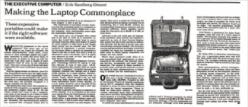
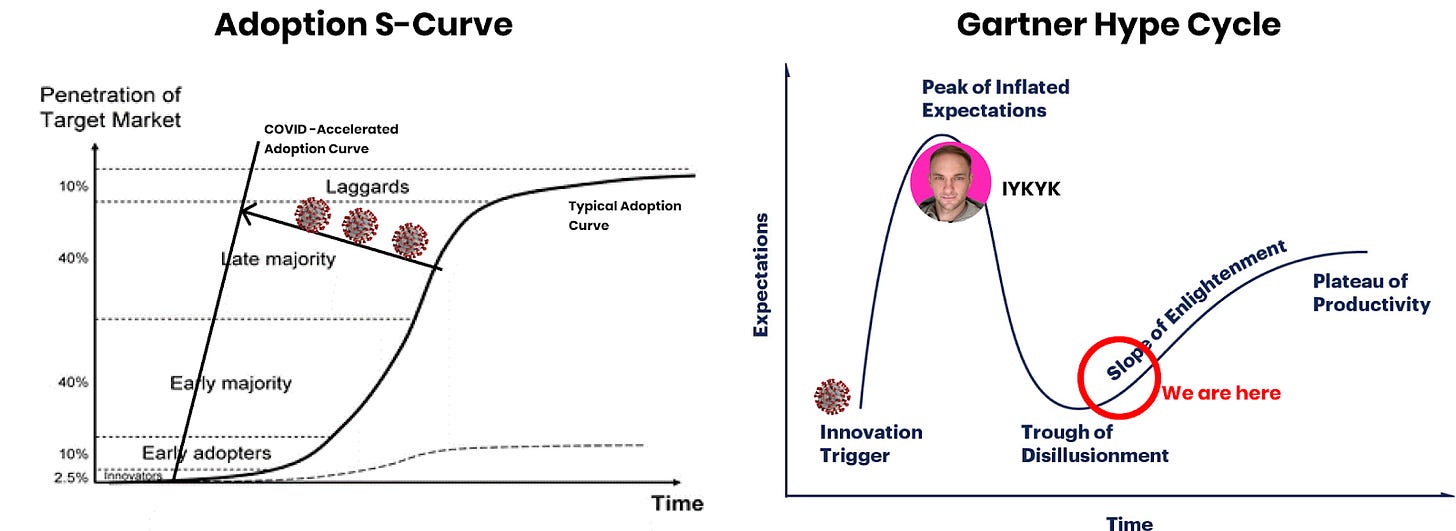

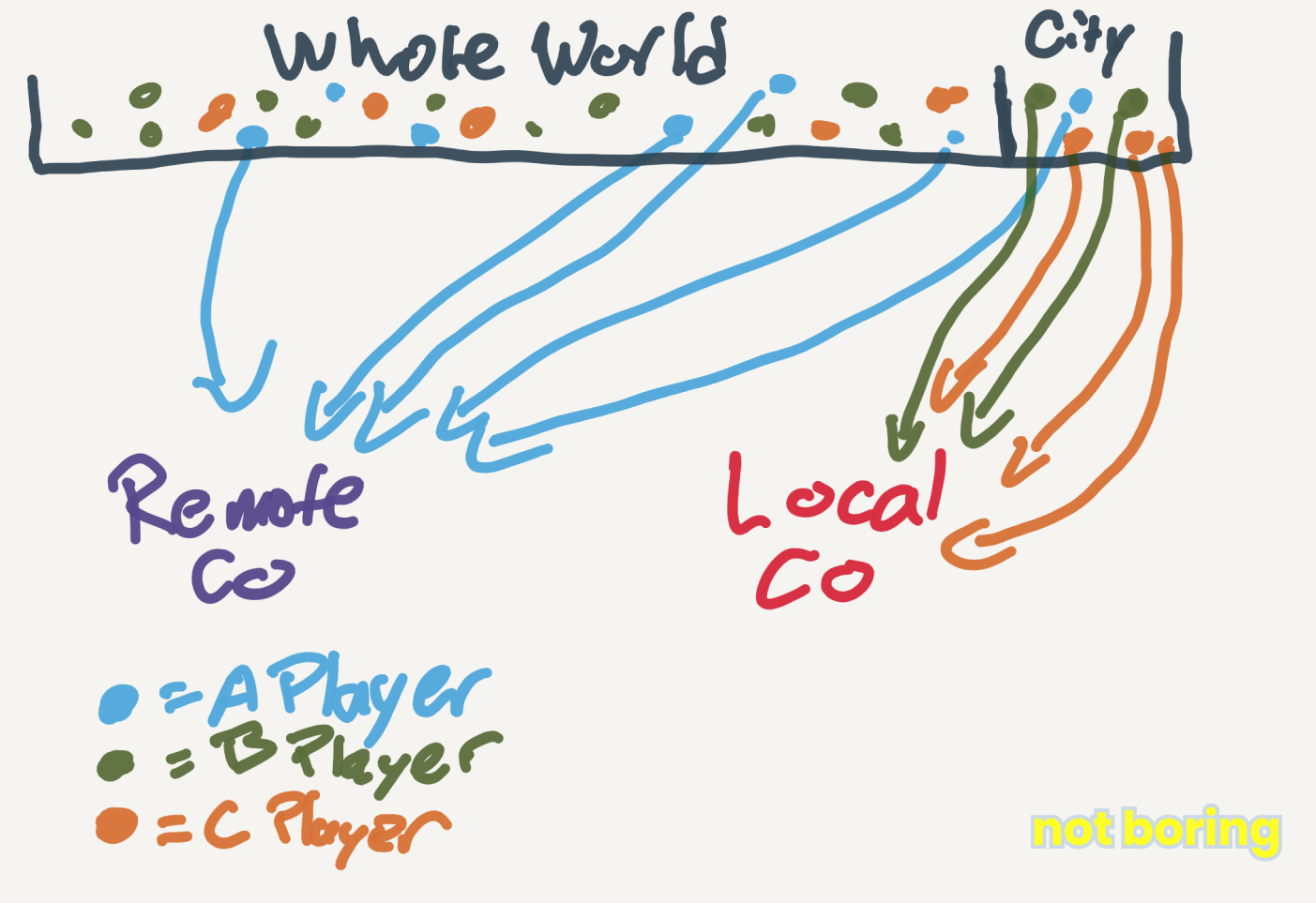



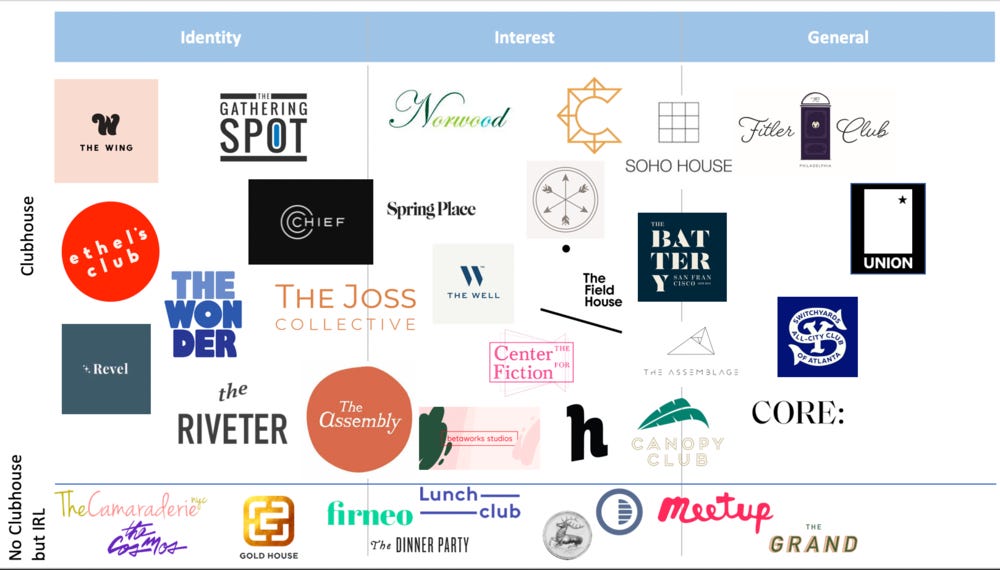
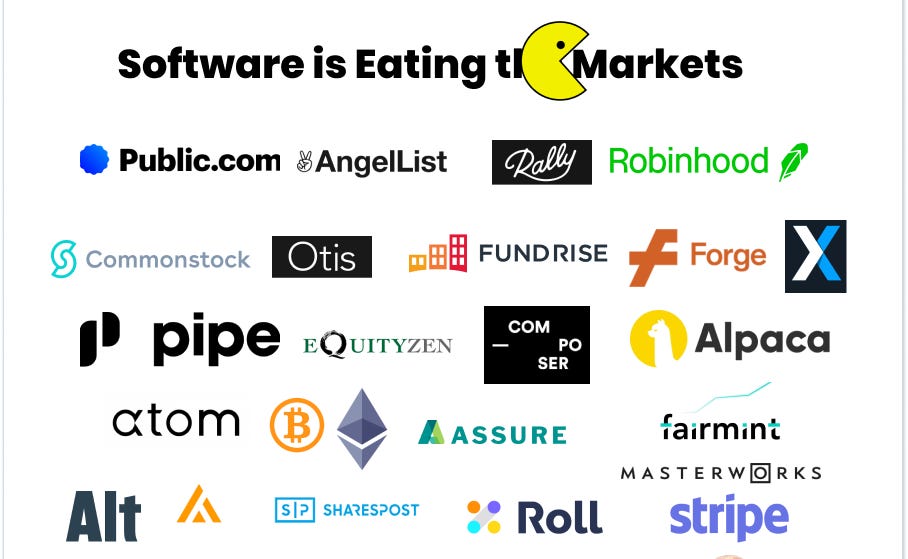










We're Never Going Back (Audio)